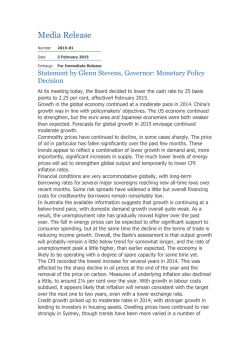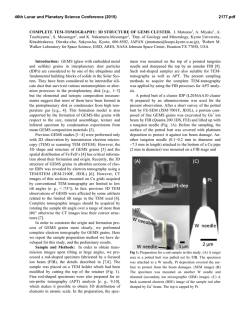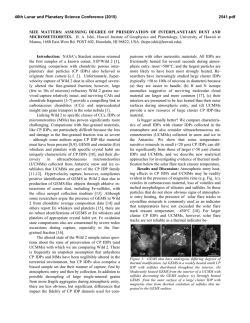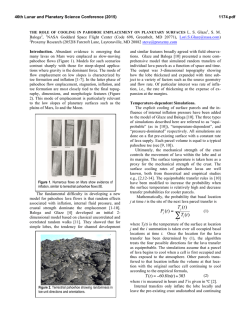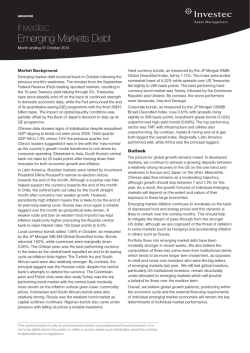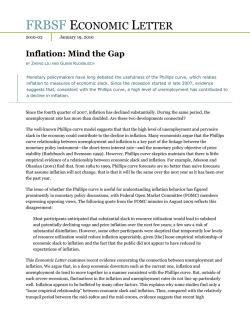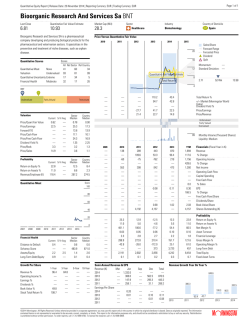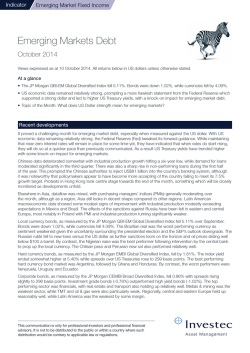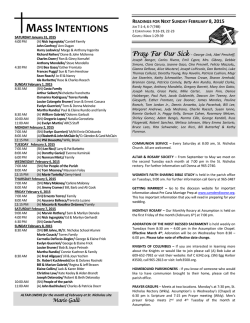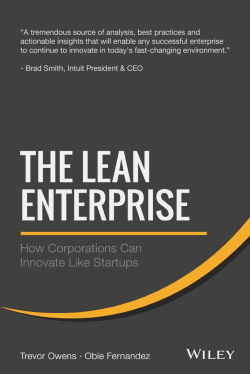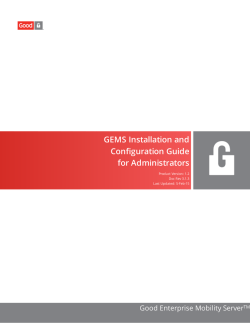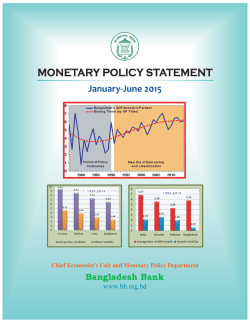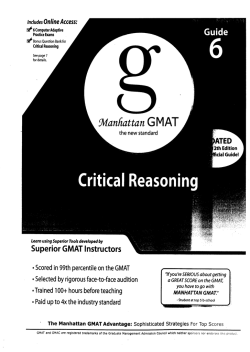
Annual Review of Economic Assumptions
Teachers’ Retirement System of Illinois Annual Review of Economic Assumptions May 29, 2014 Larry Langer - Principal, Retirement Consulting Paul Wilkinson - Director, Retirement Consulting Kai Petersen - Principal, Global Investment Advisors 7228/C8261RET01-Assumed-Rate-Return-Discussion.ppt The Valuation Process • Benefit Provisions • Asset Data • Membership Data • Funded Status • Pension Benefit Obligation • Net Gain or Loss • Actuarial Value of Assets RESULTS • Actuarial Assumptions • Contributions INPUT • Funding Methodology Today’s analysis is an annual review of the economic assumptions. The next comprehensive review of assumptions is scheduled to be completed before the results of the June 30, 2015 actuarial valuation. -1- Setting Economic Assumptions Review Past Experience Review General Practice Develop Component Parts of Each Assumption – Maintain Linkage With Investments – Maintain Internal Consistency Make Judgment About Future -2- Investment Return, Inflation and Real Return Public Fund Survey of 126 public systems Investment Return Assumption: 3.25% 8.00% 4.50% 3.00% 7.90% Survey Average Inflation Assumption 4.75% TRS Real Return Assumption We continue to see a trend of retirement systems reducing the investment return assumption used for valuation of public sector retirement system liabilities. -3- Investment Return Assumption - Considerations Short-Term Returns Not Indicative of Long-Term Return Use Expected Rates of Return by Asset Class Based Upon Accepted Industry Practice Determine Aggregate Real Return for Board’s Target Asset Allocation Policy Include Margin of Conservatism All else being equal, a lower return assumption is easier to achieve and has a higher likelihood of securing the benefits by increasing future contributions -4- Investment Return Proposed asset allocation #1 calls for: Asset Class US Large Cap Global Equity ex US Aggregate Bonds US TIPS NCREIF Opportunistic Real Estate ARS Risk Parity Diversified Inflation Strategy Private Equity Cash Allocation 18.00% 18.00% 16.00% 2.00% 11.00% 4.00% 8.00% 8.00% 1.00% 14.00% 0.00% 100.00% On the next slide we have estimated nominal and real returns over various time periods based on the allocation above Standards of practice allow for the use of investment return assumption that falls within the 25th and 75th percentile of projected returns -5- Buck Estimate Nominal and Real Returns Proposed Allocation #1 Compound (Geometric) Returns over Projected Periods 25th Percentile 4.55% 1.40% 7.67% 6.35% 3.92% 9.00% 8.08% 7.10% 5.35% 10.56% 9.27% 8.32% 7.62% 6.11% 3.81% 10.52% 9.38% 8.66% 7.84% 6.63% 5.24% 4.13% 10.54% 9.52% 8.86% 8.08% 6.84% 5.91% 5.40% 4.39% 10.59% 9.58% 8.90% 8.19% 7.18% 30-Year 40th Percentile 6.61% 8.75% 10.54% 3.56% 5.06% 5.90% 6.46% 25-Year 50th Percentile 8.48% 10.60% 2.75% 4.79% 5.70% 6.52% 7.37% 20-Year 60th Percentile 11.32% 1.29% 4.37% 5.68% 6.45% 7.48% 15-Year 75th Percentile -1.40% 3.54% 5.43% 6.50% 7.63% 10-Year 25th Percentile 1.77% 4.99% 6.43% 7.66% 5-Year 40th Percentile 3.88% 6.26% 7.75% 1-Year 50th Percentile 5.90% 8.11% Nominal 60th Percentile 8.71% Real 75th Percentile That being said, over shorter periods of time the 8.00% return is projected to be more difficult to achieve based on Buck expectations. Amounts shown are net of investment expenses at 60 bp. Estimated - Based on Q2 2014 GEMS. -6- The current assumption of 8.00% is projected to have a 60% likelihood of occurring over the next 30 years based on Buck expectations. Investment Return Based on Buck Consultant’s projections of investment returns under the proposed allocation: − the current 8.00% return has a better than 60% chance of being achieved over 30 years − Over the next decade, the chance reduces to 50% Expectations of TRS Staff and RVK are lower and should be considered when setting the assumption We recommend that consideration be given to reducing the Investment Return Assumption to increase the likelihood of achieving the assumed rate of return -7- Inflation and Real Return Current TRS inflation assumption is 3.25% per year • Short- and Long-Term projections anticipate lower inflation – Recommendation: Reduce current assumption to 3.00% based upon Buck’s current 30-year anticipation of inflation at the median • The 2012 OASDI Trustees Report projects that over the long-term (next 75 years) inflation will average somewhere between 1.8% and 3.8% – Will impact Salary increases, Tier II Pension Pay Cap Increase and COLA Current TRS real rate of return assumption is 4.75% – Recommendation: Change current assumption to coordinate with investment return and inflation • Investment return assumption of 8.00%, 7.75% or 7.50% equates to a real return of 5.00%, 4.75% or 4.50%, respectively -8- Annual Salary Increase We have not reviewed salary information since the June 30, 2011 experience study; a detailed review of salary will be conducted with the June 30, 2014 experience review If the inflation assumption is reduced to 3.00%, we recommend that overall salary increases be reduced by 0.25% with no changes to the other components of the salary increase assumption -9- Economic Assumptions Annual Salary Increase – Components: • Inflation • Real Rate of Return Valuation Interest Rate 0.25% 3.00% 0.75% 1.75% 5.75% (Average) 3.00% 5.00%, 4.75%, 4.50% or lower 8.00%, 7.75%, 7.50% or lower Assumptions Recommended for June 30, 2014 Valuation • • – Components: • Inflation • Real Wage Growth • Career Scale • Employment Type and Status Changes - 10 - Certification The results were prepared under the direction of Larry Langer and Paul Wilkinson who meet the Qualification Standards of the American Academy of Actuaries to render the actuarial opinions contained herein. These results have been prepared in accordance with all applicable Actuarial Standards of Practice, and we are available to answer questions about them. Paul Wilkinson, ASA, EA, MAAA Director, Consulting Actuary Future actuarial measurements may differ significantly from current measurements due to plan experience differing from that anticipated by the economic and demographic assumptions, increases or decreases expected as part of the natural operation of the methodology used for these measurements, and changes in plan provisions or applicable law. Larry Langer, ASA, EA, MAAA Principal, Consulting Actuary - 11 - Questions Thank you - 12 - Appendix - 13 - GEMS Information Version 5 Capital Markets Model Financial Market Variables Multiple Correlated Common Stock Indices Equity Derivatives Interest Rate Derivatives Market Indices Real Estate (REITS) Unemployment Rate • • • Simulations reflect many different environments (e.g. high and low equity returns, inflation, and bond yields) Economic variables trend toward longer-term equilibrium state Model calibrated to current economic conditions and can be recalibrated quarterly – Scalable model that can incorporate new asset classes Dynamic correlations and volatility • • Asset relationships change based on underlying economic conditions being modelled Buck Uses GEMS* from Conning Asset Management Overview Treasury Bonds Corporate Bonds Mortgage Backed Bonds And CMOs Municipal Bonds Nominal and Real GDP Growth Rate Macroeconomic Variables Actual and Expected Multiple Inflation Indices * GEMS is an acronym for General Economy and Market Simulator - 15 - Capital Markets Model Summary Overview GEMS simulates 1,000 or more paths of economic and capital market environments Then results are collected and percentiles are computed Model incorporates historical data (back to inception of various indices), and uses a factor model to forecast future values GEMS captures the real-life fact that means, volatilities and correlations are determined dynamically and can change over time This means that expected returns over, say, a 10-year horizon may not equal those over a 20-year horizon Based on Monte Carlo analysis, we derive sample means, standard deviations and correlations for reporting purposes - 16 - Capital Markets Model Summary Additional details on GEMS model Cash Cash is modeled as an investment in short term government paper paying a nominal or inflation linked rate Treasuries GEMS uses a three factor model of interest rates to model treasuries - 17 - Capital Markets Model Summary Additional details on GEMS model Corporate Bond Model In the Bond Model, individual bonds are modeled and zero coupon corporate yields are generated by adding the credit spreads to the corresponding zero coupon treasury yield. The credit spread is driven by a default intensity process, which also determines each bond’s rating. The evolution of the default intensity determines the migration, if any, of a bond’s rating from one class to another. Bond indices are created based on characteristics of bonds currently representing the index in question – Throughout a given scenario, bonds that mature or default are replaced by bonds with characteristics expected to prevail at that time - 18 - Capital Markets Model Summary Additional details on GEMS model Equity Indices All equity return series are generated using stochastic volatility with jumps (SVJ). This means that unlike a standard mean-variance model, the simulation incorporates the possibility of large swings in values that would not be anticipated taking values from a standard normal (Gaussian) distribution. The equity models generate extreme behavior (fat tails) via the specification of an independent stochastic jump (SVJ) process. The features of the returns generated by the model include volatility clustering, low frequency/high severity jumps, and jump clustering behaviors, all of which are observed in actual markets. – It has been Buck’s observation that results at the 5th and 95th percentiles are similar to a pure mean-variance model, but in the extreme tails (1st and 99th percentiles and beyond), the GEMS model can produce fatter tails with more extreme results than a plain meanvariance model - 19 - Capital Markets Model Additional details on GEMS model Models the economies of the USA, UK, Switzerland, Canada, and Germany in an internally consistent manner Can therefore capture forecast currency effects and interest disparities between and among the U.S. Dollar, Canadian Dollar, Euro, Pound and Swiss Franc Australia, Japan, Norway, Sweden, and Denmark also available GEMS includes the major equity indices for all the economies it models. In addition, Buck has created, with guidance from Conning, our own user-specified models of equity sectors, and alternative investment classes (e.g., hedge funds) using the GEMS Market Indices facility. - 20 -
© Copyright 2024
